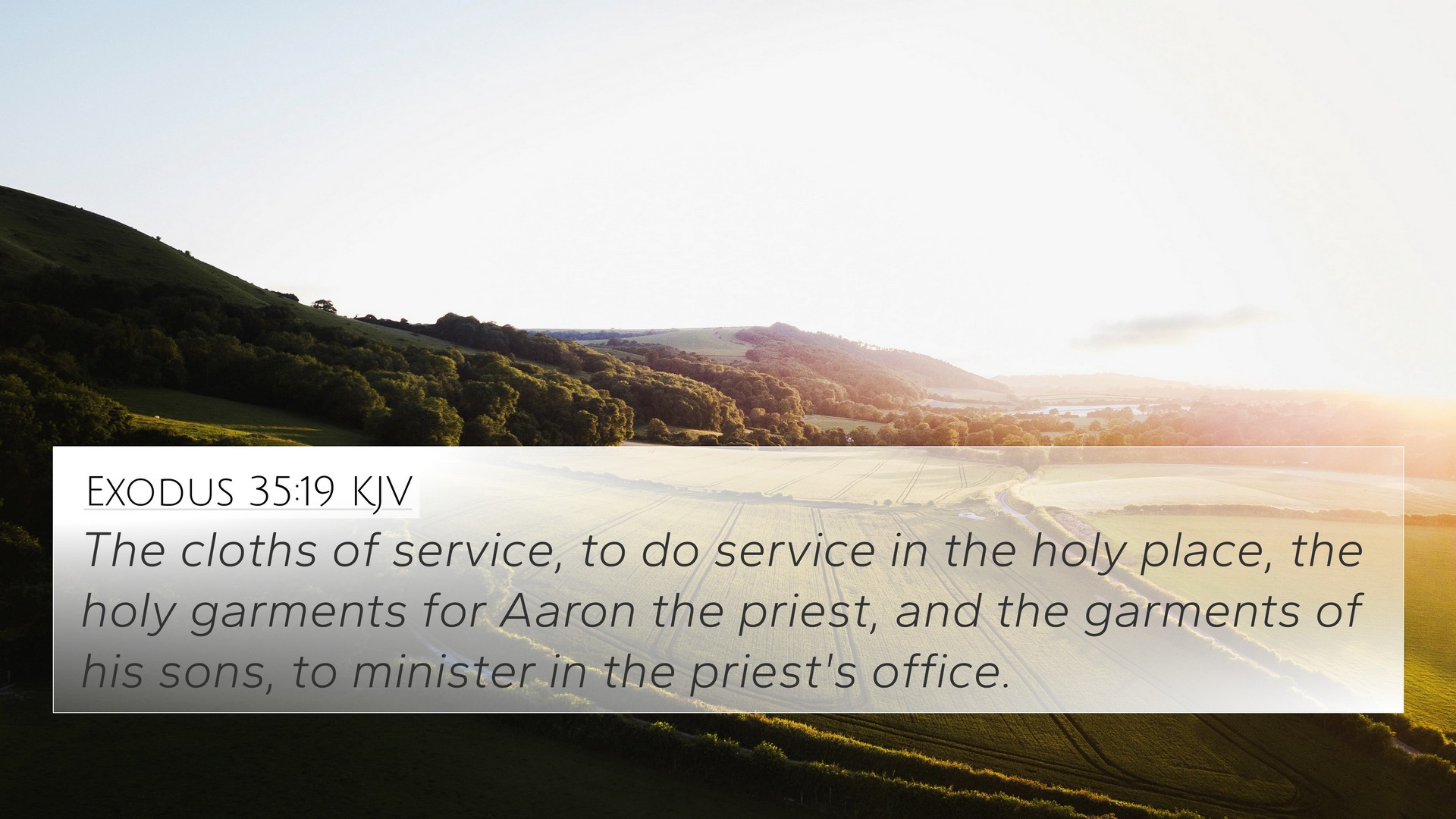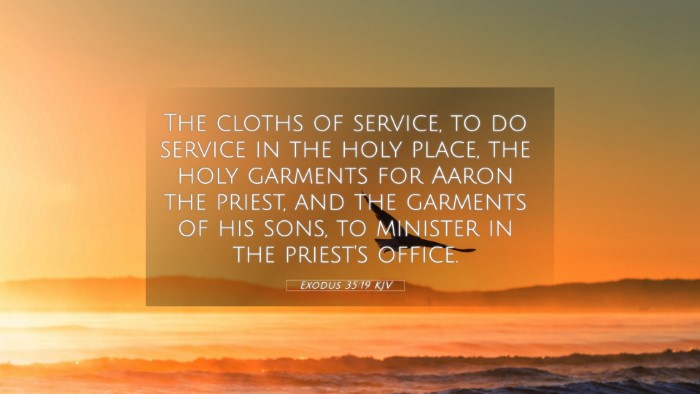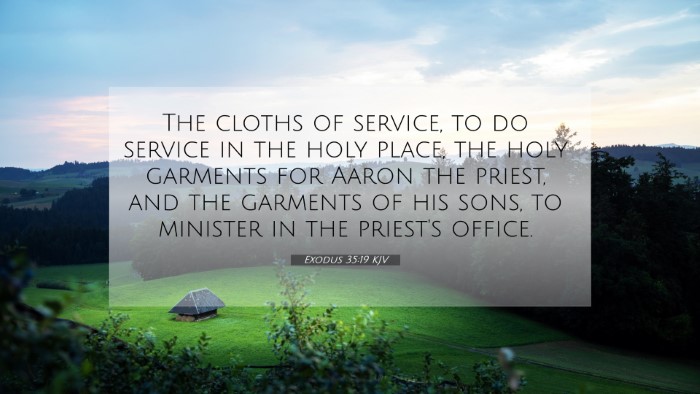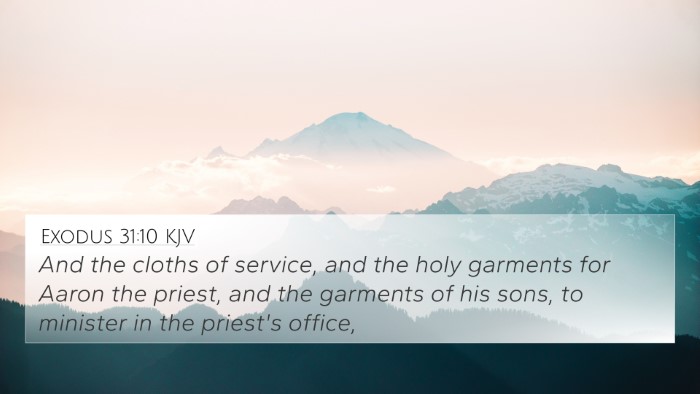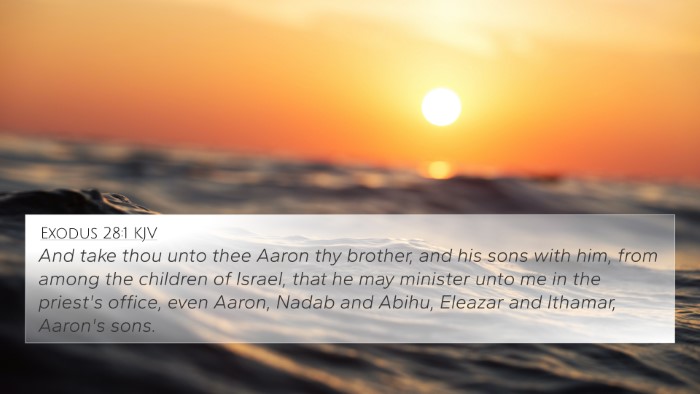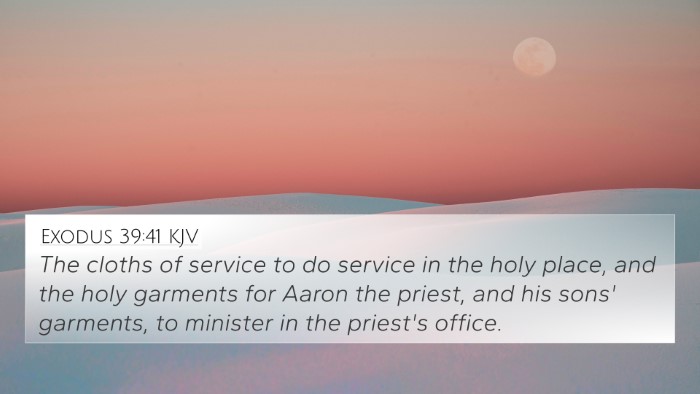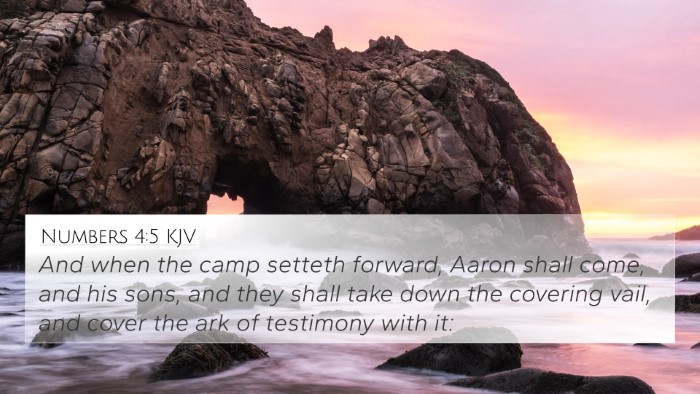Exodus 35:19 - Meaning and Analysis
Verse: "The cloths of service to do service in the holy place, the holy garments for Aaron the priest, and the garments of his sons, to minister in the priest's office." (Exodus 35:19)
This verse stands at the intersection of the Israelite religion and its prescribed rituals, highlighting the significance of the garments and materials designated for priestly duties. This analysis draws insights from public domain commentaries to decode its meaning.
Contextual Background
The verse comes from a section of Exodus where God instructs Moses about the preparations for the construction of the Tabernacle. This sacred space was central to Israelite worship, serving as a tangible representation of God's presence among His people. Understanding the materials and garments required for the priests illuminates the reverence and sanctity attributed to their role.
Interpretation from Commentaries
Insights from various commentaries reveal a multifaceted interpretation of this verse:
- Matthew Henry: Observes the meticulous instructions given for the priestly garments emphasize God's holiness and the seriousness of the priestly office. The garments are seen as a symbol of the splendor and dignity required of those serving God.
- Albert Barnes: Points to the practical purpose of the garments, indicating that they not only served a ceremonial function but were also essential for the priests to perform their duties without error. Barnes underscores the importance of preparation for divine service.
- Adam Clarke: Elaborates on the symbolism associated with the garments, interpreting them as representations of God's righteousness and the need for holiness in serving Him. He notes the connection between the physical garments and the spiritual garments of righteousness believers are called to wear.
Thematic Connections
This verse resonates with numerous themes throughout the Bible, including:
- Holiness and Service: The garments signify that service to God requires holiness, paralleling New Testament teachings about the call for Christians to be a "royal priesthood" (1 Peter 2:9).
- Preparation for Worship: The detailed instructions reflect the importance of preparation in worship, akin to the New Testament emphasis on coming to God with a pure heart (Matthew 5:8).
- The Role of the Priest: The garments represent the mediator role of the priests; similarly, Jesus Christ is acknowledged as the ultimate High Priest (Hebrews 4:14).
Cross-Referenced Verses
Exodus 35:19 has several related passages that enhance its understanding:
- Exodus 28:2-4: Details the garments specifically designed for Aaron and his sons.
- Hebrews 7:27: Highlights the unique role of Jesus as priest who offers himself once for all, contrasting the Old Testament sacrifices.
- 1 Peter 2:5: Encourages believers to offer spiritual sacrifices, relating to the priestly duties mentioned in Exodus.
- Leviticus 8:6-9: Documents the consecration of Aaron and his sons, reflecting the establishment of the priestly system.
- Romans 12:1: Calls on believers to present their bodies as living sacrifices, parallel to the sacrificial nature of priests in the temple.
- Hebrews 9:11-14: Discusses Christ entering the holy place as the perfect sacrifice, fulfilling the symbolism of the priestly garments.
- Numbers 16:40: Establishes the authority of Aaron’s priesthood and the importance of the garments.
How to Use Bible Cross-References
Cross-referencing provides deeper insights into scripture. Here’s how you can effectively engage with the Bible using cross-references:
- Start with a primary verse, such as Exodus 35:19, and identify key themes or words.
- Use a Bible concordance or cross-reference guide to find related verses.
- Engage in comparative Bible verse analysis by examining how different verses illuminate various aspects of the theme.
- Take notes on how these connections deepen your understanding of God's word.
Conclusion
Exodus 35:19 serves as a poignant reminder of the sanctity associated with divine service and the meticulous nature of God's instructions regarding worship. The themes of holiness, service, and the vital role of the priest resonate throughout the Bible, encouraging us to recognize the deeper meanings within each scripture.
By utilizing tools for cross-referencing, believers can uncover the rich tapestry of connections that exists within the Word of God, facilitating a greater understanding of scripture while promoting spiritual growth.
